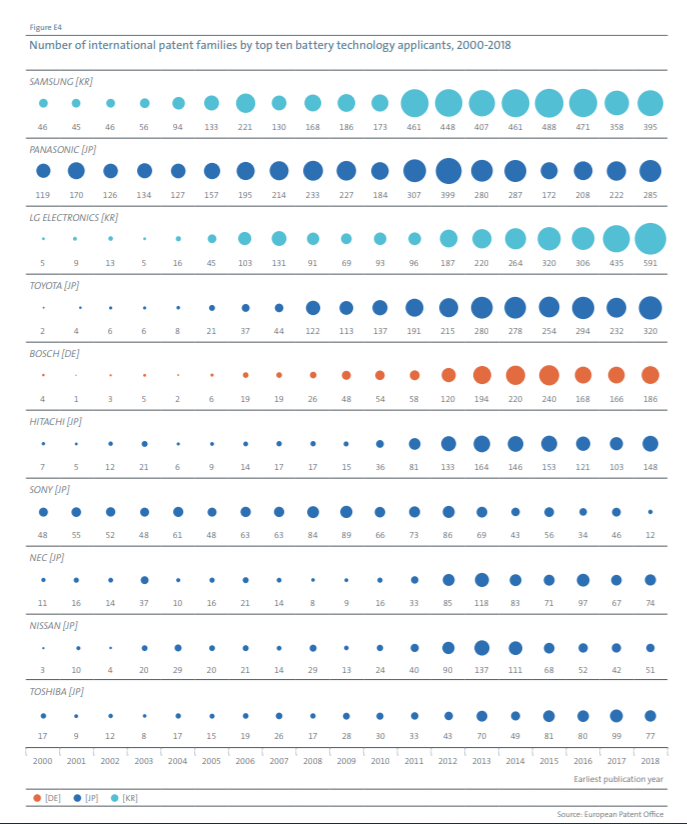Between 2005 and 2018, patenting activity in batteries and other electricity storage technologies grew at an average annual rate of 14 percent worldwide, four times faster than the average of all technology fields, according to the new joint study published by the European Patent Office (EPO) and International Energy Agency (IEA).
The International Energy Agency (IEA) and European Patent Office's (EPO) joint report, “Innovation in batteries and electricity storage” highlights the growth in patenting activity in batteries and electricity storage over the past decade.
“More than 7,000 international patent families (IPFs) related to electricity storage were published in 2018, up from 1,029 in 2000,” according to the report. "While a consistently upward trend has been observed since 2000, there has been a notable acceleration since 2005, with an annual growth rate of 14 percent until 2018, compared with just 3.5 percent on average for all technology areas across the economy." (Figure E1)
The report shows that batteries make for an estimated 90 percent of all patenting activity in the area of electricity storage, and the growth in innovation is primarily driven by advances in rechargeable lithium-ion batteries used in consumer electronics and electric cars. The uptake of electric mobility in particular has been recognized as the main driver for the development of new lithium-ion chemistries aimed at improving power output, durability, charge/discharge speed, and recyclability.
It further highlights that technological development is also being fueled by the need to integrate larger quantities of renewable energy (wind and solar power) into the electric grid.
The study revealed that of the top 10 global application behind IPFs related to batteries, nine are based in Asia. These include seven Japanese companies, led by Panasonic and Toyota, and two Korean companies, Samsung and LG Electronics. Bosch, a German company, is the only non-Asian applicant to feature in the ranking.
The report shows that Japan and Korea have established strong leadership in battery technology globally and the technological progress combined with mass production in an increasingly mature industry has led to a significant drop in battery prices in recent years. Prices have declined by nearly 90 percent since 2010 in the case of lithium-ion batteries for electric vehicles, and by around two-thirds over the same period for stationary applications, including electricity grid management.
The report highlights Li-ion currently leads the battery technology patenting, accounting for 38 percent of all battery-related IPFs in 2010-2018.
“NMC cathode chemistry has seen the most innovative breakthroughs related to Li-ion batteries since the launch of mass-market electric vehicles, but potentially disruptive competitors are emerging outside the big companies and with more regional variation,” the study underscored.
According to the IEA’s Sustainable Development Scenario, for the world to meet climate and sustainable energy goals, close to 10 000 gigawatt-hours of batteries and other forms of energy storage will be required worldwide by 2040 – 50 times the size of the current market.
The study is the first joint report by the two organizations, as a part of the MoU signed between IEA and EPO for bilateral cooperation aimed at promoting innovation in sustainable energy technologies. As per the MoU, the two entities will publish a series of joint studies over the next three years to inform policymakers and the public about technology trends in areas that are critical for the energy transition and climate change mitigation.









